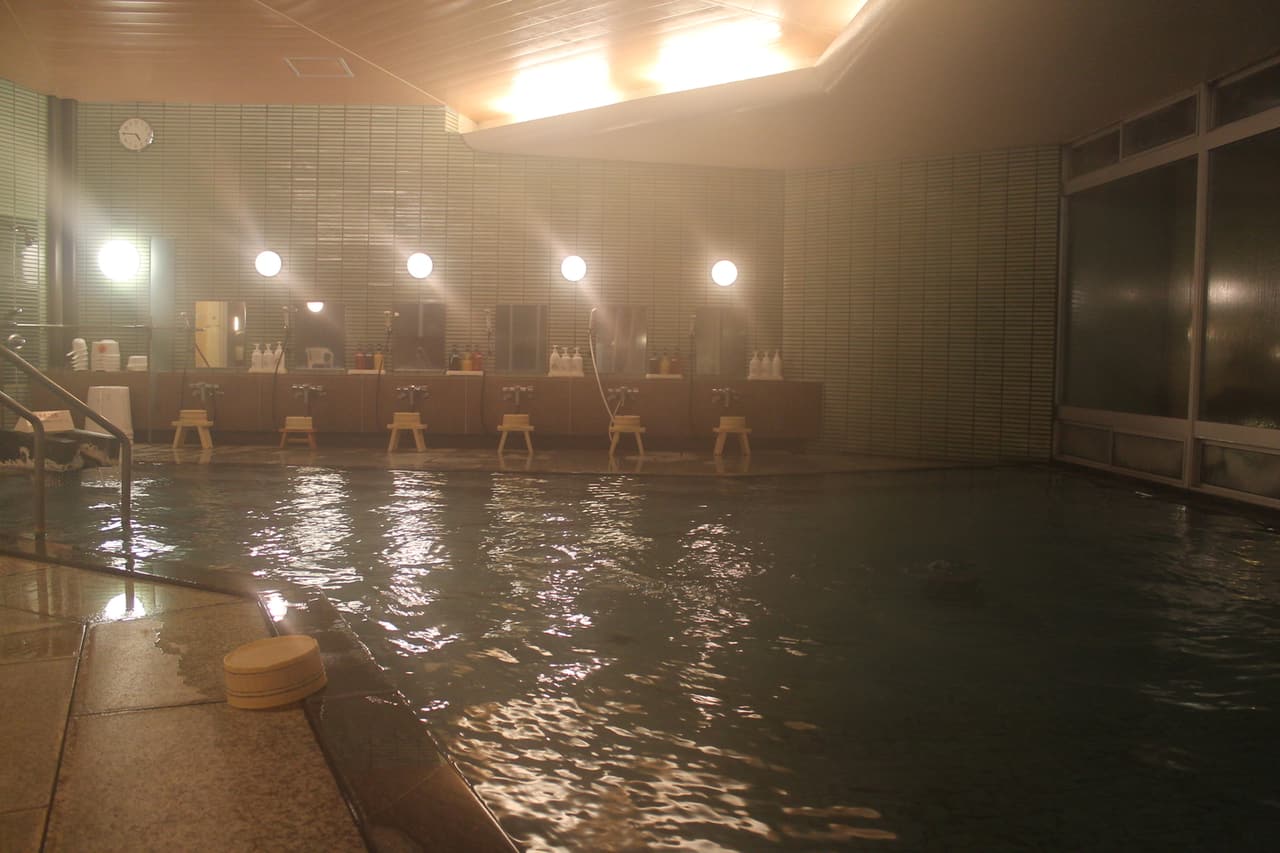Sponsored by Reconstruction Agency
A health resort (Kurort in German) is usually regarded as a place of physical cleansing and mental healing for people in a natural environment. Kaminoyama Onsen, a hot spring village in Tohoku’s Yamagata Prefecture is such a place where both its hot springs and beautiful surroundings at the foot of Mount Zao have a purifying and regenerating effect for your body and soul.
Taking the Shinkansen (the bullet train) from Tokyo to Tohoku to stay in the Tsukioka Hotel in Kaminoyama is like taking a deep breath after you have emerged from the turbulent metropolis. At first I am nervous at the prospect of the foreign region and the onsen, which I have never visited before, however with every mile we put between us and Tokyo, I feel my tension drain away and I start to relax. The landscape is stunningly beautiful, especially at the time of the famous autumn colours (Kōyō in Japanese). Surrounded by the natural beauty, I get the feeling of coming home.
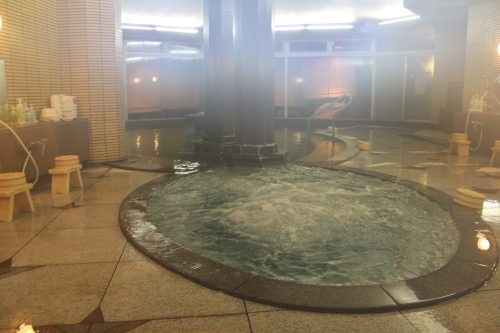
The hot springs are segregated by gender and switch every day.
The Kaminoyama Onsen
Legend says that a Buddhist monk once saw a crane that tended its wounds in the waters of the hot spring. Since then, people have been coming to Kaminoyama to soak in the hot, healing water and regenerate body and soul. Some of hot springs in Japan are often beneficial to heal a specific disease or ailment. The Kaminoyama Onsen is said to be especially effective in the treatment of wounds and injuries.
The water is between 38 and 42 degrees Celsius (100-107.6 F). The bathrooms at the Tsukioka Hotel are gender-segregated, however, the bathroom changes every morning, which means that the women’s bath becomes the men’s bath for the day and vice versa. And the next day they change back.
The locker room is decorated in warm wood tones. In Kaminoyama Onsen, just as in every other hot spring, I have to be completely naked to get into the water. I can store my clothes in baskets and then enter the onsen through a door.
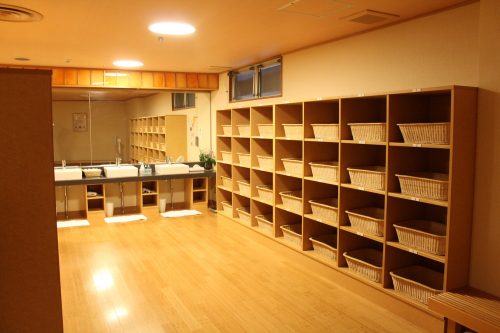
In the locker rooms guests can store their belongings before they enter the onsen.
Numerous shower heads are attached to the wall. There, guests must thoroughly clean themselves with the provided shampoo and body soap. For women, it is also important to tie up their hair so that it has no contact with the water. Only then they can go into the soothing water and relax in the two indoor baths. I cleanse my body and hair extensively, before I tie up my hair. I am excited, because this is my first time visiting an onsen and thus I am full of expectation as I sink into the hot water. And indeed, it is like a fiery embrace that dispels the tension from my muscles. Quickly my skin gets used to the temperature and I sink deeper into the hot spring until only my head is out of the water. I can really feel how my body relaxes.
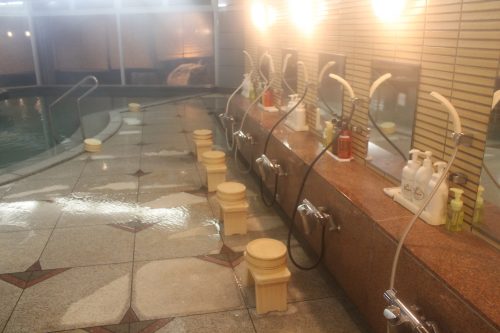
Guests must wash themselves before they enter the water.
There is also an open-air bath nestled between sand-colored rocks on the outside wall of the indoor bath. It looks inviting with the clear water and the silvery steam floating above the bath like mist. I sink into the outdoor pool and sigh. It feels incredibly good. Especially in cold temperatures, I am positive the outdoor bath is like a balm for the body and mind. The outdoor hot spring, along with the cool, clean air, is an ideal place to relax.
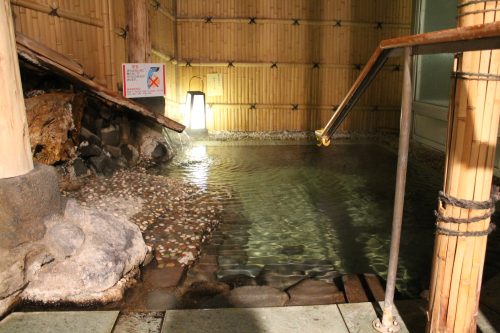
Especially in the cold months the outdoor bath is ideal for relaxing body and mind.
A Night in a Ryokan
Not only the hot springs are worth a visit, but it is also worth spending at least one night in a local ryokan. The Tsukioka Hotel is a so-called ryokan, a traditional Japanese inn. After several visits to relax in the hot spring water, you can sleep well on the futon in the quiet, simple rooms with tatami mats covering every inch of the floor. If you wear yukata, light summer kimonos provided by the ryokan, it is a bit like a journey back in time. After my visit to the onsen I look forward to my very first night on a traditional futon and dress myself authentically in the yukata.
A Hiking in the Woods around Mount Zao
In Kaminoyama there is more to do than taking a long bath in the hot springs and enjoying a stay in ryokan. Mount Zao, which rises in the immediate vicinity of the town, is the most active volcano in northern Honshu Island and the lush slopes at its foothills invite people to go on long walks and hikes through nature.
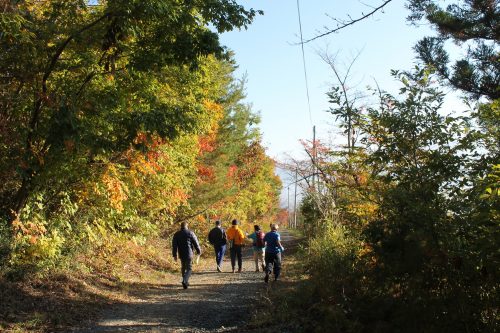
Countless hiking trails lead into the nature.
A group of elderly Japanese women and men meets up every morning around 7:45 to hike up to the Hayama Shrine. The path of the same name is one of many that leads through the forest to lofty heights. The Hayama Shrine is located half-way to one of the numerous peaks of the hills around Kaminoyama. It is 700 years old and the oldest one in Kaminoyama.
At the end of October, temperatures here in Yamagata Prefecture are around 5 degrees celsius in the early morning and I shiver. Our breath hangs in the air like a silvery mist as I make my way into the forest together with the group of Japanese. We follow a winding trail, on which my calf muscles are already stressed, until the road levels a little after about 15 minutes. At this point we are already rewarded with an impressive view at the city. I already have the feeling of having left behind my worries and concerns at the foot of the mountain.
Along the path there is a fountain with a stone basin to be found. Immediately, it becomes clear that this well is way beyond old. The guide explains that hikers can do the so-called Kneipp cure here.
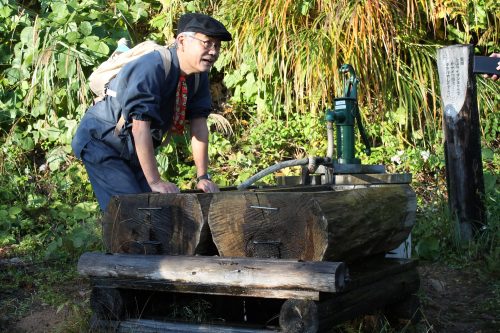
Dipping the arms into the cold water stimulates blood circulation.
Sebastian Kneipp was a German priest who contracted tuberculosis. The Kneipp cure and Kneipp medicine are named after him. Essentially, he made hydrotherapy popular. Water treading is about staying afloat with little physical effort. You should step on the spot in the cold to lukewarm water and pull your leg completely out of the water with each step, then immerse it again. This should stimulate the blood circulation.
Although you cannot walk through the icy water in the fountain on the Hayama Trail, you can dip your arms in the water. Many of the seniors do this on their way to the summit.
Exercises at the old Hayama Shrine
With each step towards the summit, the air becomes clearer and whenever I can catch a glimpse of the valley through the treetops, the view becomes more beautiful and I often pause simply to enjoy the mesmerizing scenery. On the way through the forest, people can enjoy the autumn colors in all their beauty. It is unbelievable how the season can color the leaves into all these fall hues. There is also a surprise for mushroom lovers, the guide reveals. In these forests one can find the Matsutake mushroom, the most expensive mushroom in Japan.
After arriving at the Hayama Shrine, our group does some exercises. First, arms and legs are warmed up and limbs are stretched. Countless little rocks cover the ground and the guide shows us how to use them for a few little playful exercises. We should grab two stones, throw them in the air and catch them again with our hands crossed. It is fun and awakens my spirits and at the same time exercises my hand-eye coordination.
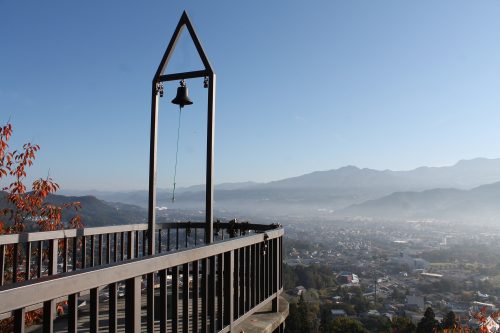
From the “Yumi Katsura Lover’s Sanctuary” one has a fantastic view at the city.
On the way back, we also do voice exercises. So all of us roar in a chorus “Ya-Ho!”. And when a loud echo returns from the mountains, the guide is satisfied. We also pass a special viewing platform, the “Yumi Katsura Lover’s Sanctuary”. On the platform, there is a bell, and we have the most fantastic view of the city.
This early in the morning, clouds still hang low in the valley, and from the platform, I can see the bright sun rays of the new day breaking through the clouds. The breathtaking view is like a reward after the hardship of the ascent and motivates people to return and above all, to repeat the walking route.
When you descend from the mountain, one has the feeling of being refreshed and having new strength. The group of Japanese goes up and down the same path every morning. Anyone who wishes to join the group is welcome.
Access, opening hours and prices
You can reach the station of Kaminoyama Onsen with the Shinkasen on the JR Yamagata Shinkansen line, which runs every hour from Tokyo. The journey takes two and a half hours and costs around 11,000 yen. The route is included in the Japan Rail Pass, JR East Tohoku Area Pass and JR East South Hokkaido Pass.
Tsukioka Hotel is a 13-minute walk from Kaminoyama Onsen Train Station.
The Official Link: Japan Tohoku New Toji Style
[cft format=0]

